Earlier this year, Google brought out the second generation of its successful smart home display, the Nest Hub.
Among other things, the main feature of this new device is sleep tracking. The display can sense your middle-of-the-night movements, measure your quality of sleep, and help you drift off with ambient sounds and light adjustments. Sounds great, right?
I’ve been lucky enough to test out all the intricacies of the Google Nest Hub over the past few months, and I particularly wanted to see how this new sleep sensing worked in practice.
Here’s how I found the Google Nest Hub (2nd Gen).
What’s good?
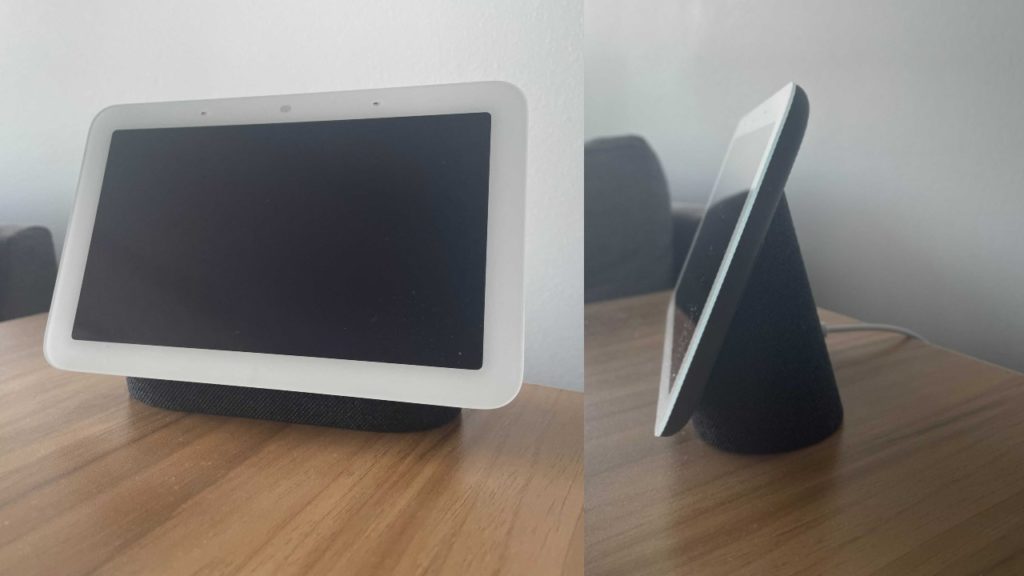
One of my favourite elements of the new Google Nest Hub is its portability and design. It just looks nice.
The device is streamlined and easy to move around, with a speaker that acts as its stand and a sleek 7-inch display. It’s not huge, but it also doesn’t suffer in quality.
The Nest Hub isn’t wireless, so you’ll always need to have it plugged in and connected to Wi-Fi. Make sure it’s within range of your router because if the Nest Hub isn’t connected, it can’t do anything until it’s back online.
Design-wise, the Nest Hub also has a microphone switch on the rear of the screen that will cease listening instantly, which is a win if you’re conscious of privacy.
In terms of features, the Google Nest Hub does pretty much everything you’d expect of a smart display.
Some of the features I used the most were its media apps like Netflix and Spotify. There’s something that will always be cool about saying, “Hey, Google, play x song” and having it do all the work for you.
I frequently found myself asking it to turn on an episode of a show to watch while I was cooking or to play some music in the background.
In terms of compatibility, the Nest Hub is compatible with a bunch of media apps like Spotify, Netflix, YouTube and Disney+. Linking your accounts will allow you to give voice commands while watching, and you can even use Google’s new gesture feature to control things like pausing and rewinding with just a hand movement.
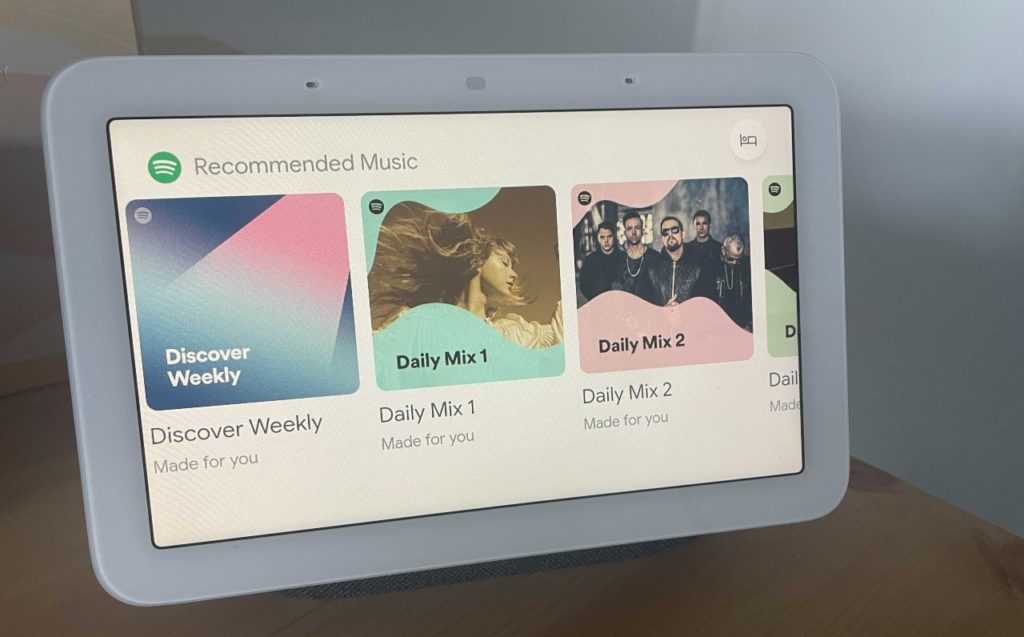
Just like any virtual assistant, the Nest Hub can also handle any of your queries, whether they be bringing up a recipe tutorial, asking about the daily weather or just a general question you’d type into Google.
It can also take care of other connected devices like other Google speakers or smart lights and cameras. I have not invested in any of these, so can’t say how the connectivity works, but if you possess any compatible smart devices in your home, the Nest Hub will help streamline them for you.
If you’re in the Google ecosystem with apps like Gmail or Google Calendar, the Nest Hub can also help connect you with a daily schedule and alert you of meetings and reminders.
Practically, the touchscreen and voice recognition worked smoothly and I rarely had any issues with it. I also haven’t had any incidents of mishearings or the device doing something I never asked it to (looking at you, Siri).
With all the general smart home features out of the way, let’s get to the main event: sleep tracking.
Sleep Sensing
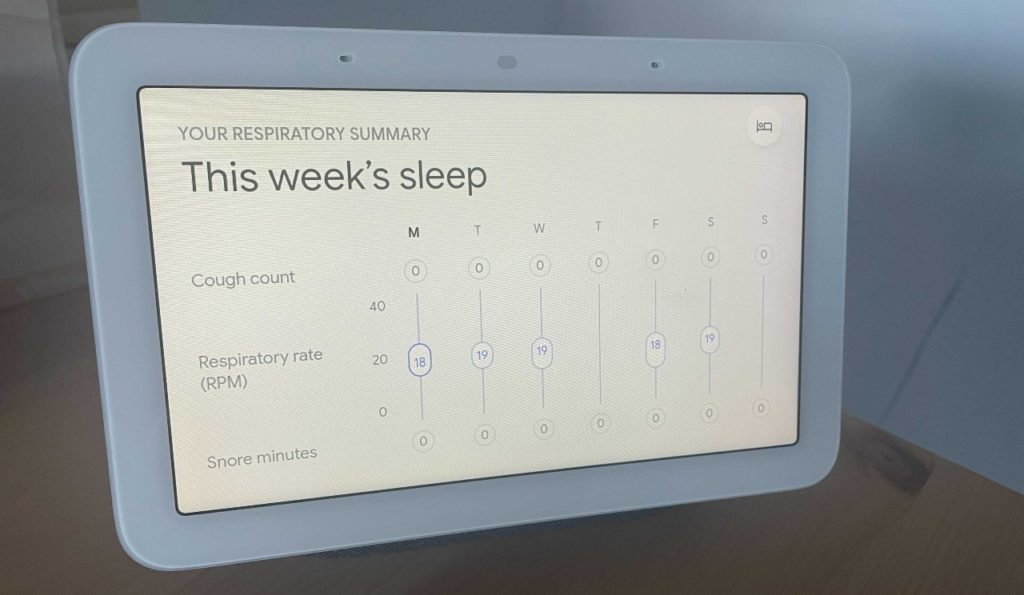
All the necessary items are in place to get a decent sleep-tracking experience from the Nest Hub, but unfortunately, my results have been mixed.
Setting up sleep sensing on the Nest Hub is pretty easy. After connecting your device with the Google Home app on your phone, you can agree to a number of disclaimers to allow the device to use its motion sensors to track your sleep.
You’ll need to place the device in close and unobstructed proximity to your bed and calibrate it for a minute or so. After that, each night the Nest Hub will track your sleep and give you information on the number of hours you slept, what the quality of your sleep was like, and data on things like respiratory rate and coughing or snoring.
Each morning, you can see a sleep summary on your Nest Hub display or get more detailed results by connecting the Google Fit app. This slightly annoyed me because Lord knows I don’t need yet another app to conglomerate data on my phone, but here we are.
The best part of the sleep sensing experience for me was not having to physically wear a device. I’m an Apple Watch user, but I find it uncomfortable to sleep while wearing one, so this provided a solid alternative to get those insights.
My experience with the sleep data always seemed to be slightly off, however. Sometimes I’d look at a night where I knew I had a decent number of hours sleep and the Nest Hub would say I only had three hours. In the analysis, it seemed to miss big chunks of motion-sensing during the night.
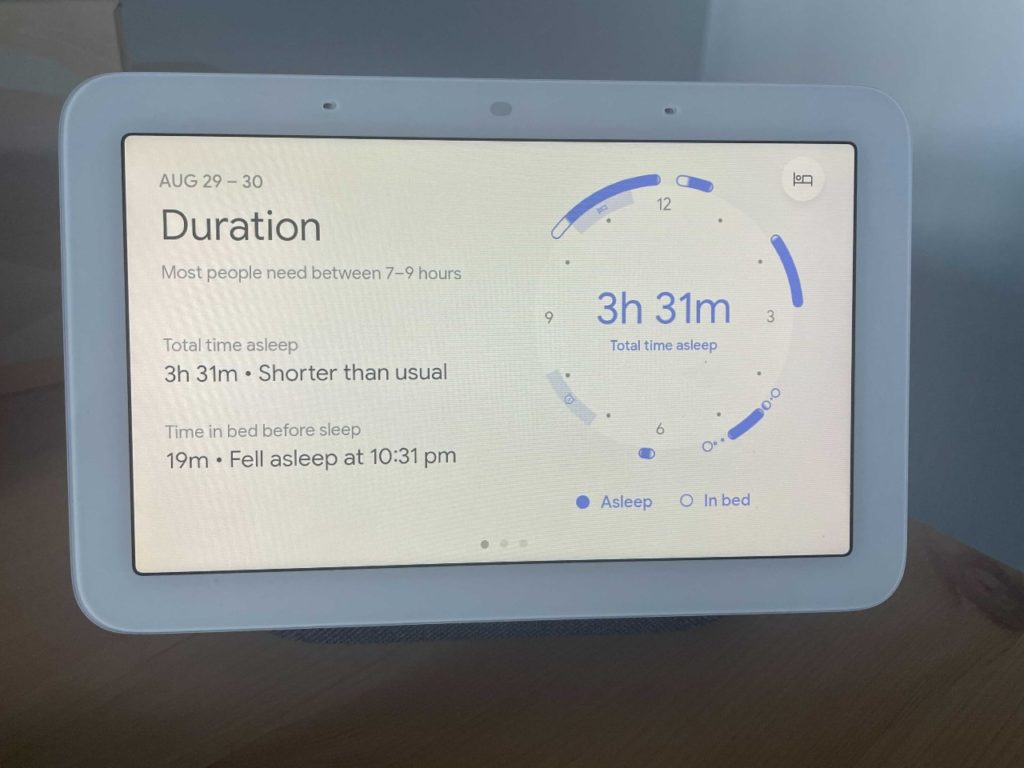
Do I need to adjust some settings? Recalibrate? Is my Wi-Fi dropping out? Is the Nest Hub having a nap? Whatever the reason, it has consistently skewed my sleep-tracking results, so I can’t 100% trust them.
Google does warn that elements like device placement, noise and other nearby sleepers can disrupt readings. Sleep sensing is also only in preview mode on the 2nd gen Nest Hub and it’s the first time Google has put this technology in a device, so it’s likely there are still kinks to iron out.
This being said, there are still plenty of other sleep features out of which I get a decent amount of use.
I particularly love the ambient light sensing that I’ve set up to automatically switch the display to a clock face when I turn the lights out. This saves me from being blinded by my phone every time I go to check the time in the middle of the night.
The Nest Hub has also become my daily alarm clock, and it offers neat sleep-inducing features like ambient sounds and wind down.
Even without accurate data readings, I’ve still enjoyed the sleep-focused features on the new Nest Hub.
What’s not so good?
One of the main challenges I had with the Google Nest Hub was deciding which room to place it in.
As mentioned, the Nest Hub isn’t wireless, and while I can wish for a wireless rechargeable battery-powered edition all I want, decisions must be made.
The device is small and portable enough, but unplugging it and restarting it every time you change rooms is not ideal. Given the focus on sleep tracking, it mostly ended up staying in my bedroom, but there were times where I equally enjoyed using it in my kitchen.
The obvious, corporate consumerism answer to this question is just to get another Nest Hub, but for those without the cash or inclination, it’s worth deciding for what and where you’ll need to use the Nest Hub before purchasing.
Another thing to consider is that the Nest Hub houses a microphone but no camera. This may be a downside for some who want to participate in video calls with the device, but I didn’t find myself missing one.
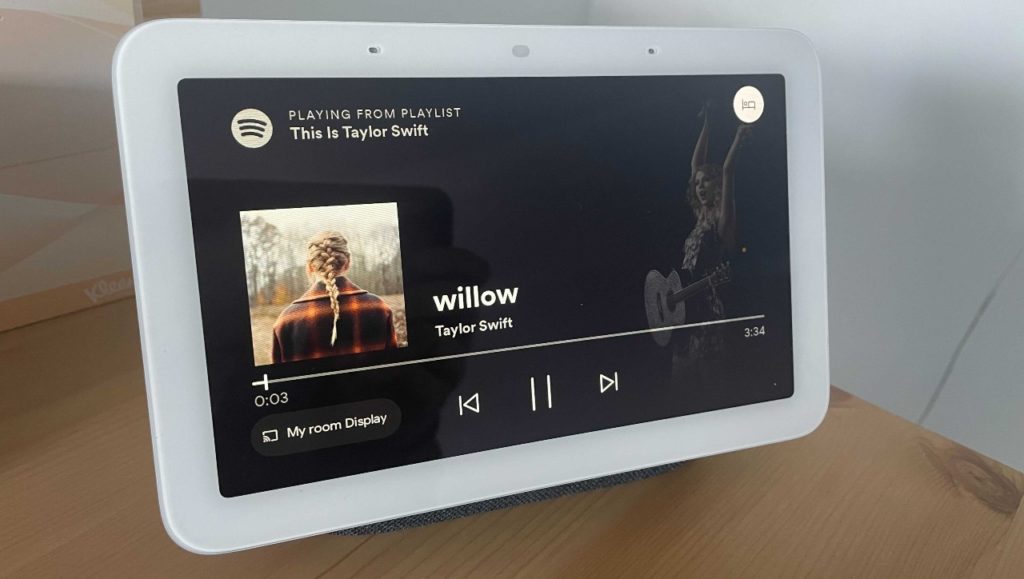
The sound quality also isn’t the greatest on the Nest Hub. It does the job when you’re playing music in the background or watching a TV show, but the audio did reduce in quality the louder the volume.
As always, a smart home device is designed to bring you into a corporate ecosystem.
In this case, it’s Google, so if you’re partial to Google’s software, apps, home devices or phones, you’re going to get more out of your experience.
Google Nest Hub: The Verdict
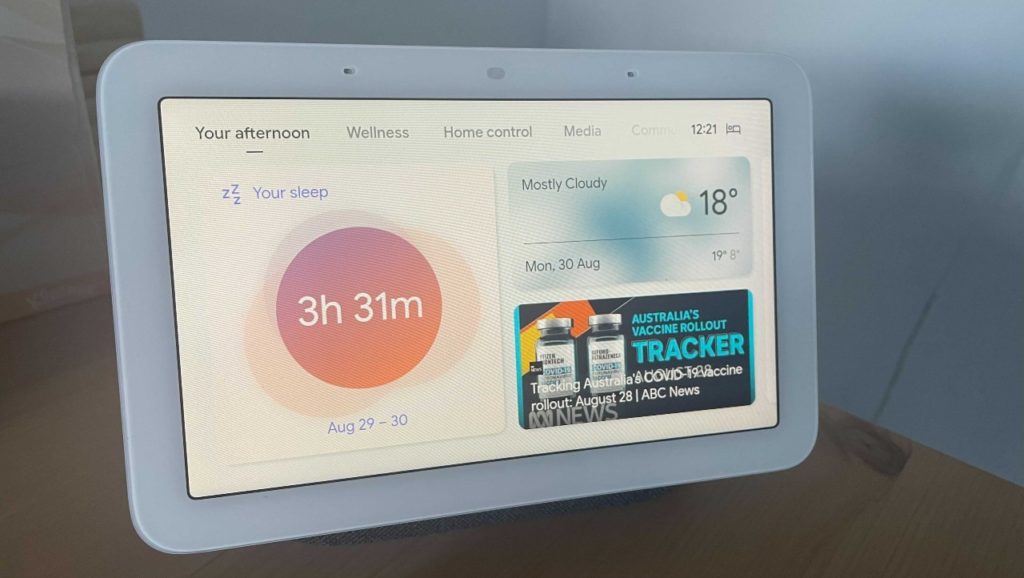
I’ve had both this Google Nest Hub and the Amazon Echo Show 10 at home for review, and while they both offer different features, I found myself preferring the Nest Hub.
For me, this comes down to its sleek design and portability, its accurate and quick responsiveness, and a large array of useful inbuilt apps that are easy to use. While the sleep sensing data hasn’t blown my mind, the device has become an integral part of my bedroom set-up with its large array of sleep features.
At $149 RRP, it also doesn’t break the bank for a smart display. It’s $100 cheaper than the larger Google Nest Hub Max, and is on par with Amazon’s Echo Show 8 and Lenovo’s smart display.
When it comes to making a decision, the biggest factor is probably which software ecosystem you prefer using. I’m an Apple simp but in the absence of an Apple-branded smart display, I found the Google Nest Hub does everything I need it to and is a nice addition to my bedroom.
I’ve never really been a huge smart home person, mainly because the cost of all the accompanying connected devices to make one worth it is just too high. But Google’s second-generation Nest Hub is a decent device all on its own and I’d be happy to have one in every room.
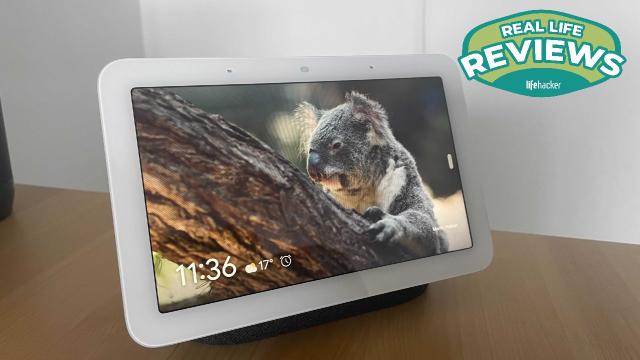
Leave a Reply
You must be logged in to post a comment.